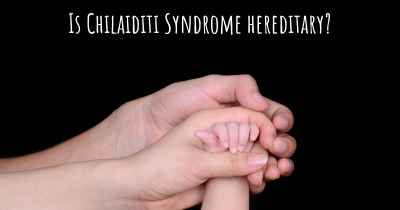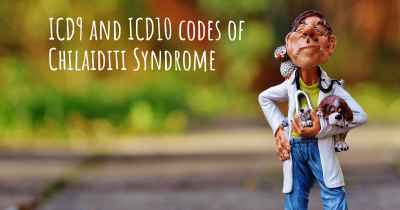Living with Chilaiditi Syndrome. How to live with Chilaiditi Syndrome?
Can you be happy living with Chilaiditi Syndrome? What do you have to do to be happy with Chilaiditi Syndrome? Living with Chilaiditi Syndrome can be difficult, but you have to fight to try to be happy. Have a look at things that other people have done to be happy with Chilaiditi Syndrome

Living with Chilaiditi Syndrome
Chilaiditi Syndrome is a rare condition where a portion of the colon becomes trapped between the liver and the diaphragm. This can cause various symptoms such as abdominal pain, bloating, constipation, and respiratory issues. While living with Chilaiditi Syndrome can be challenging, there are several strategies and lifestyle modifications that can help manage the symptoms and improve quality of life.
1. Seek Medical Guidance
If you have been diagnosed with Chilaiditi Syndrome, it is crucial to work closely with your healthcare team. They can provide you with the necessary information, guidance, and support to manage your condition effectively. Regular check-ups and open communication with your doctor will help monitor your symptoms and make any necessary adjustments to your treatment plan.
2. Understand Your Symptoms
It is important to educate yourself about the symptoms associated with Chilaiditi Syndrome. By understanding your symptoms, you can better manage and anticipate any potential flare-ups. Keep a symptom diary to track the frequency and severity of your symptoms, which can help identify triggers and patterns.
3. Adopt a Healthy Diet
A well-balanced diet plays a crucial role in managing Chilaiditi Syndrome. Focus on consuming a variety of fruits, vegetables, whole grains, and lean proteins. Avoid foods that may exacerbate your symptoms, such as fatty or greasy foods, carbonated beverages, and foods high in fiber. Experiment with your diet to identify any specific triggers and work with a registered dietitian if needed.
4. Stay Hydrated
Proper hydration is essential for maintaining overall health and managing Chilaiditi Syndrome. Drink an adequate amount of water throughout the day to prevent constipation and promote regular bowel movements. Avoid excessive consumption of caffeinated or alcoholic beverages, as they can contribute to dehydration.
5. Manage Stress
Stress can worsen symptoms associated with Chilaiditi Syndrome. Incorporate stress management techniques into your daily routine, such as deep breathing exercises, meditation, yoga, or engaging in hobbies that help you relax. Prioritize self-care and ensure you have a support system in place to help you cope with any emotional challenges.
6. Stay Active
Regular physical activity can help alleviate symptoms and improve overall well-being. Engage in low-impact exercises such as walking, swimming, or cycling. Consult with your healthcare provider before starting any exercise regimen to ensure it is safe and suitable for your condition.
7. Medication and Treatment
Your doctor may prescribe medications to manage specific symptoms associated with Chilaiditi Syndrome, such as pain relievers, laxatives, or anti-anxiety medications. Follow your prescribed treatment plan diligently and communicate any concerns or side effects to your healthcare provider.
8. Support Groups
Connecting with others who have Chilaiditi Syndrome can provide valuable emotional support and practical advice. Consider joining support groups or online communities where you can share experiences, ask questions, and learn from others facing similar challenges.
9. Regular Follow-ups
Keep up with regular follow-up appointments with your healthcare team. This will help monitor your condition, assess the effectiveness of your treatment plan, and make any necessary adjustments. Open communication with your doctor is vital in managing Chilaiditi Syndrome effectively.
Living with Chilaiditi Syndrome can be challenging, but with the right strategies and support, it is possible to lead a fulfilling life. Remember to prioritize self-care, seek medical guidance, and make necessary lifestyle modifications to manage your symptoms effectively.








